Spring is a great time to see acacias in flower at Joseph Banks Native Plants Reserve at Kareela. With over 1,000 species of Acacia growing across Australia, there is great diversity in leaf shape and size. Here’s just a small selection of the great diversity of acacias, commonly known as wattles. They are grouped by size from ground covers to trees.
They were photographed in August in the Acacia garden at Joseph Banks Reserve. Find out more about some of the many species at the APS NSW plant profile database here.
Groundcovers
Acacia baileyana prostrate is a ground cover form of what is usually a tree known as Cootamundra wattle. It is very vigorous and hardy, with grey foliage and bright yellow flowers.
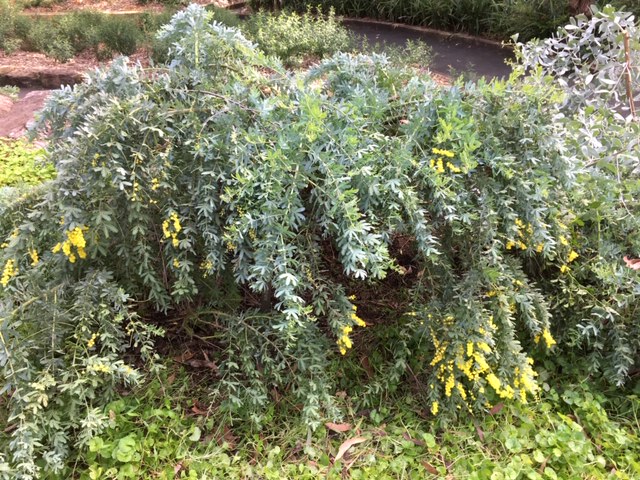
Acacia ‘Silver Cascade’ is supposed to be a low form of Acacia binervia with light grey foliage, but this one keeps wanting to grow up, so it is pruned regularly. It is just about to come into flower.
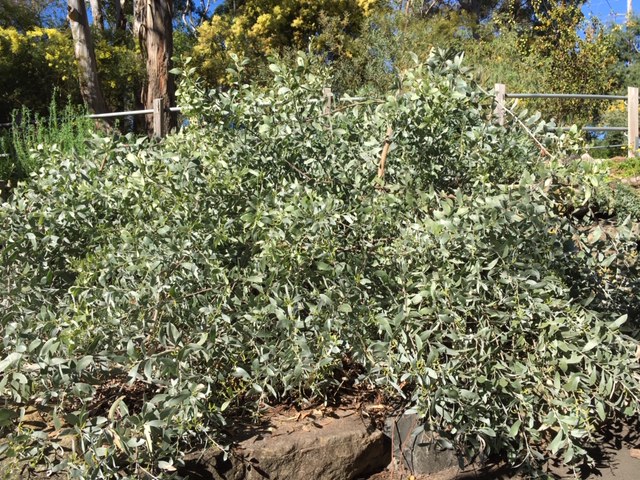
Low shrubs
Acacia ‘Little Flori’ is a low form of Acacia floribunda.
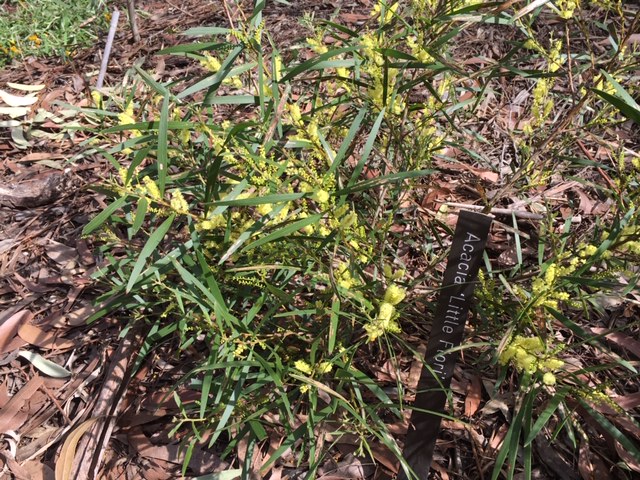
There are many smaller cultivars of Acacia cognata available including Acacia ‘Limelight’ and Acacia ‘Mini Cog’. These compact shrubs are grown for their bright green, soft foliage, but don’t flower. We have used them as edging plants along the path, but there have been a few deaths and replacements along the way.
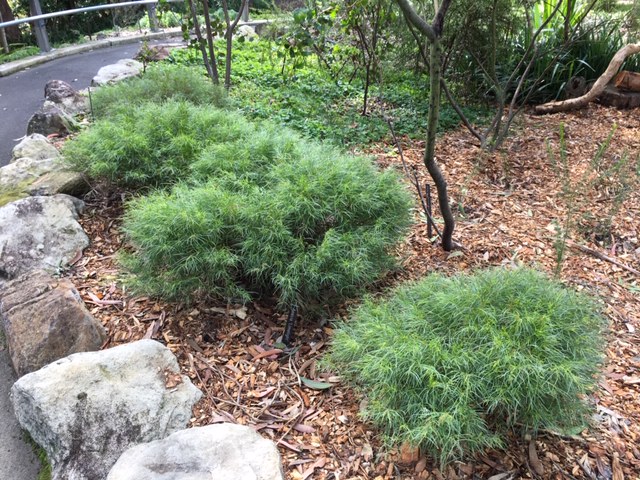
Acacia ‘Honey Bun’ is a compact, dense form to about 1–1.5 m of the tree Acacia howittii. It actually grows naturally into this bun-like shape without any pruning. Unlike the Acacia cognata cultivars, it does produce flowers but they are pale lemon and very hard to see amongst the foliage. There’s a groundcover form called Acacia ‘Green Wave’.
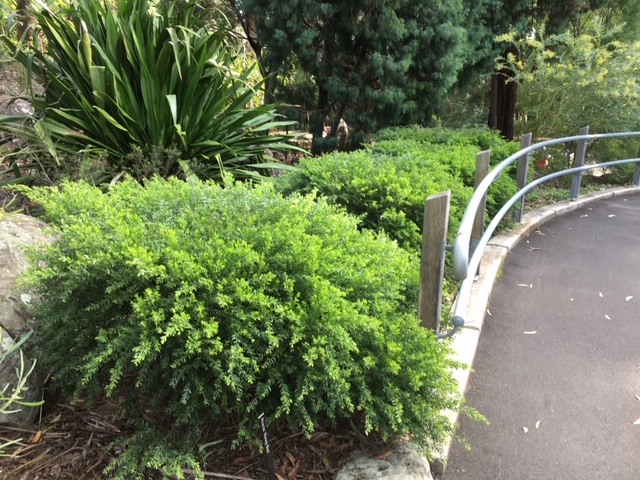
Acacia amblygona is a scrambling groundcover to low shrub. This one is just coming into flower.
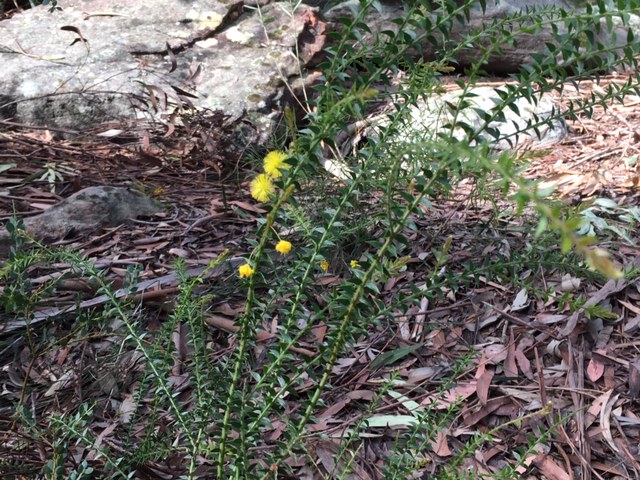
Acacia leprosa weeping is a low form of what is usually a tree. This one is a scrambling shrub to about 1 m.
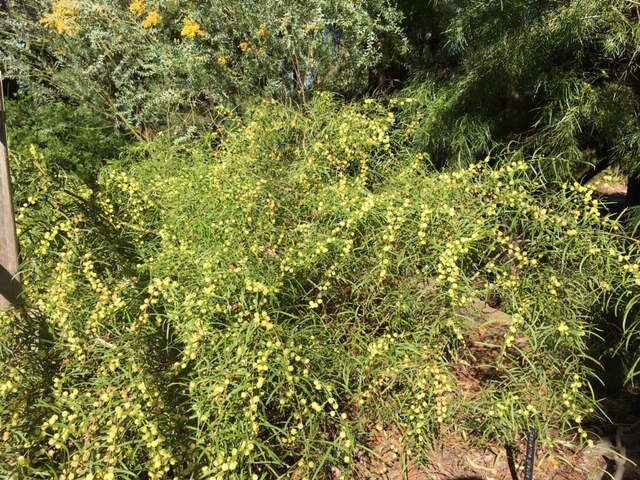
Shrubs
Even amongst the diversity of acacias, Acacia triptera has very distinctive foliage with stiff knife-like phyllodes growing out at 90 degree angles along the stem. It is very prickly indeed, so take care where it is planted and when pruning. This one has suffered from the death of some branches, which we have pruned off.
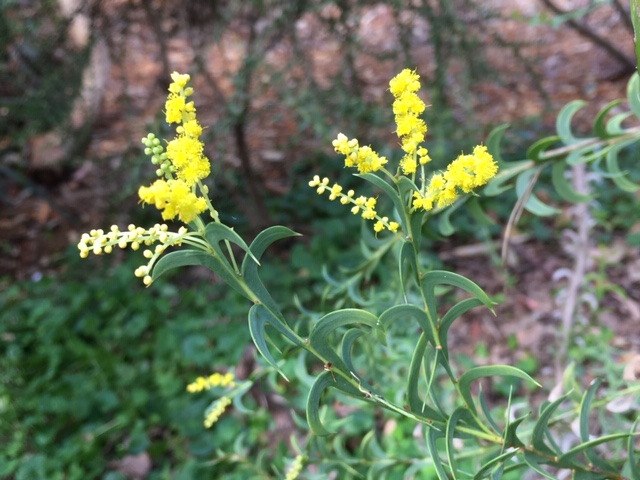
Acacia denticulosa also has very distinctive foliage. It has very large, rough leaves and rods of bright yellow flowers. The leaves have to be felt to appreciate just how rough and sticky they are. This plant suffered from insect attack last year, but has recovered well.
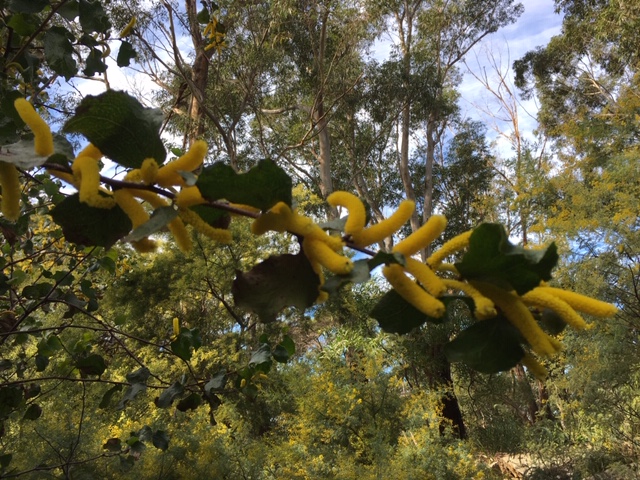
Acacia cremiflora is a small shrub which grows naturally in inland NSW. Ours has pale lemon flowers, but they can also be yellow. The sun on the leaves affects the appearance of the colour below.
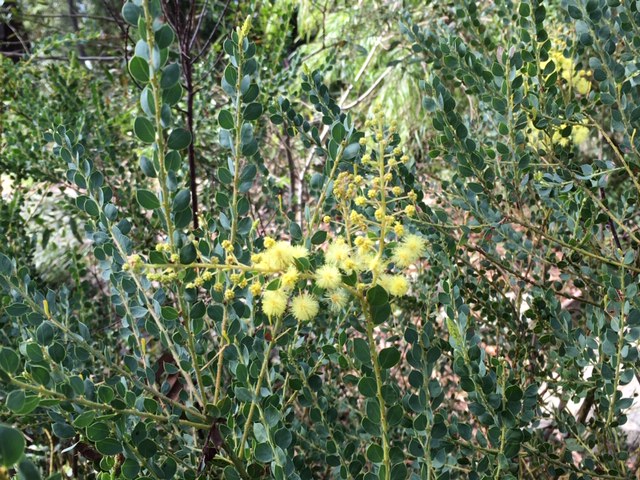 |
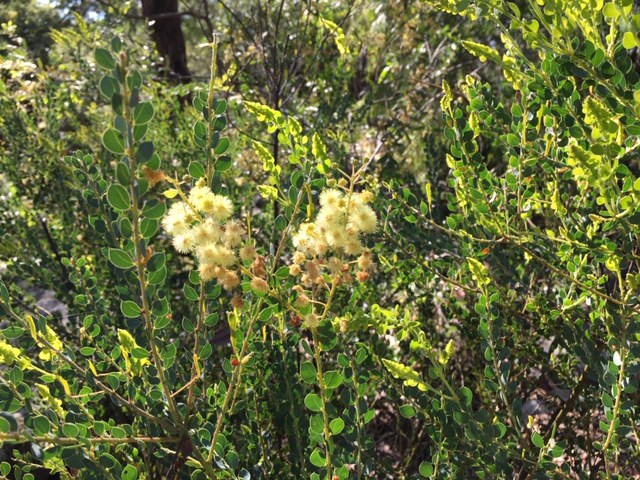 |
Acacia aphylla looks like it doesn’t have any leaves at all, but this is an adaptation to reduce water loss in the hot dry conditions where it grows naturally.
Acacia chinchillensis is from Chinchilla in Queensland, but grows well in Sydney. It has soft fine, light grey foliage and bright flowers.
The shrub below is likely Acacia drummondii, which has flowers arranged in short rods. It grows naturally in south-west Australia. Our plant is very sparse.
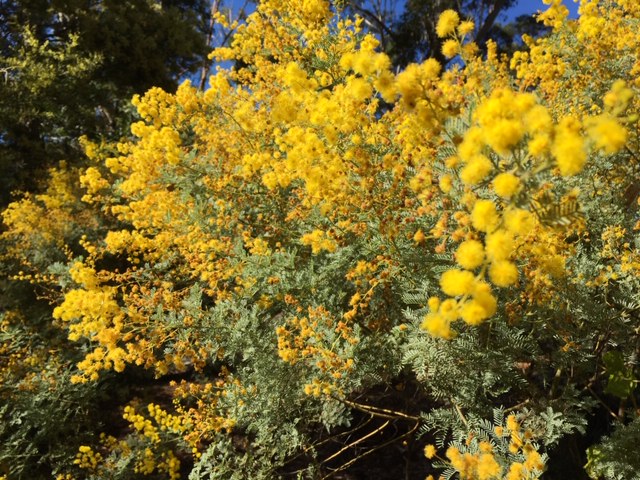 |
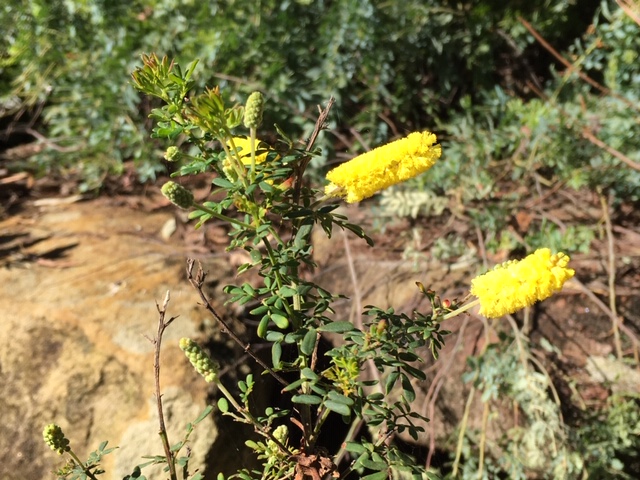 |
Trees
An acacia tree in full flower is a stunning sight. Some gardeners avoid acacias because they can be short-lived, but a fast growing tree can provide many benefits including screening, habitat and a great show while slower growing plants are getting going.
Acacia cultriformis is a large shrub to small tree. The name refers to the triangular knife-shape of the grey phyllodes. Acacia vestita also has similar shaped leaves.
Acacia fimbriata is a popular tree with soft, linear foliage. A dwarf form is also available.
 |
 |
Acacia binervia has grey phyllodes, but the colour is not apparent in the photo below of the whole tree.
 |
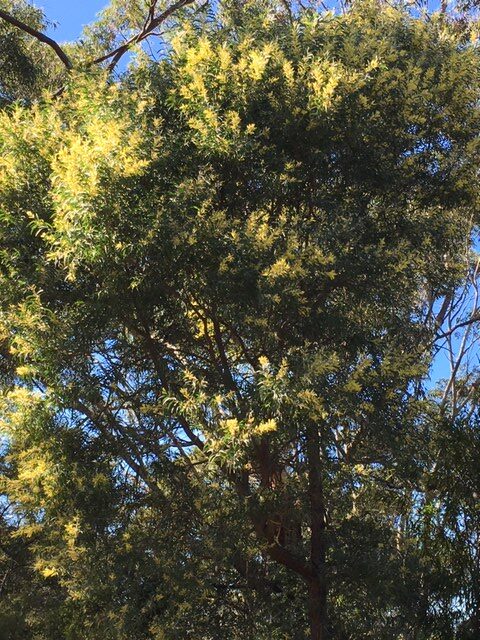 |
The reserve is a planted garden with some areas of natural vegetation. There are other species of Acacia too, but not all are in flower or are even harder to photograph than these.
More about Joseph Banks Native Plants Reserve
Joseph Banks Native Plants Reserve is open 7 days a week, 9 am to 5 pm. Free entry. It has paved accessible paths, picnic tables, electric BBQs and toilets. The reserve is maintained by Sutherland Shire Council, and members of APS Sutherland Group volunteer at monthly working bees.
It is located in Manooka Place, Kareela. There is also a pedestrian entry off Bates Drive.
In 2020, the reserve is celebrating its 50th anniversary, having been established in 1970 to commemorate the 200th anniversary of Joseph Banks collecting plants at Botany Bay on James Cook’s Endeavour voyage in 1770.
